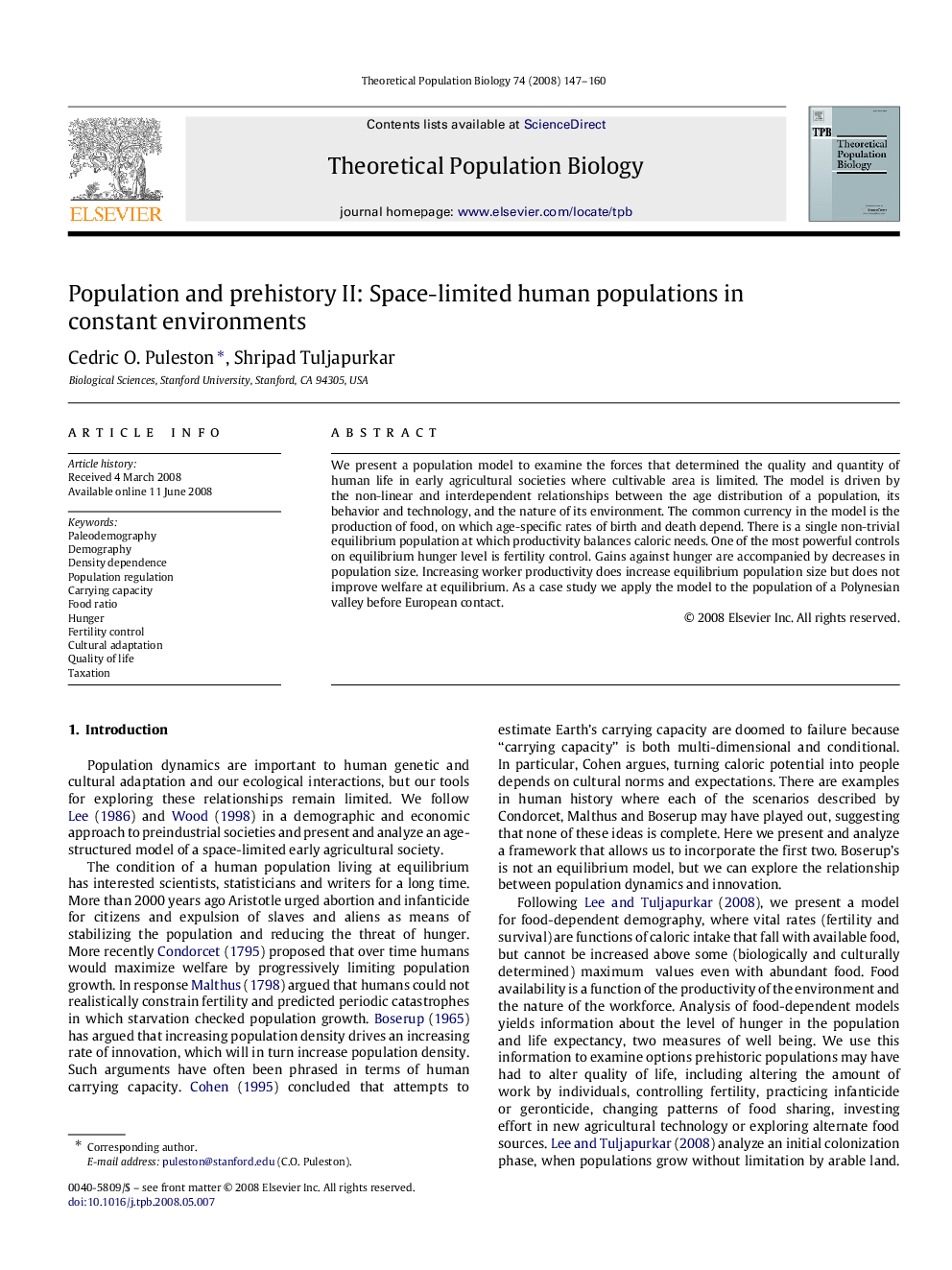| Article ID | Journal | Published Year | Pages | File Type |
|---|---|---|---|---|
| 4502674 | Theoretical Population Biology | 2008 | 14 Pages |
We present a population model to examine the forces that determined the quality and quantity of human life in early agricultural societies where cultivable area is limited. The model is driven by the non-linear and interdependent relationships between the age distribution of a population, its behavior and technology, and the nature of its environment. The common currency in the model is the production of food, on which age-specific rates of birth and death depend. There is a single non-trivial equilibrium population at which productivity balances caloric needs. One of the most powerful controls on equilibrium hunger level is fertility control. Gains against hunger are accompanied by decreases in population size. Increasing worker productivity does increase equilibrium population size but does not improve welfare at equilibrium. As a case study we apply the model to the population of a Polynesian valley before European contact.
